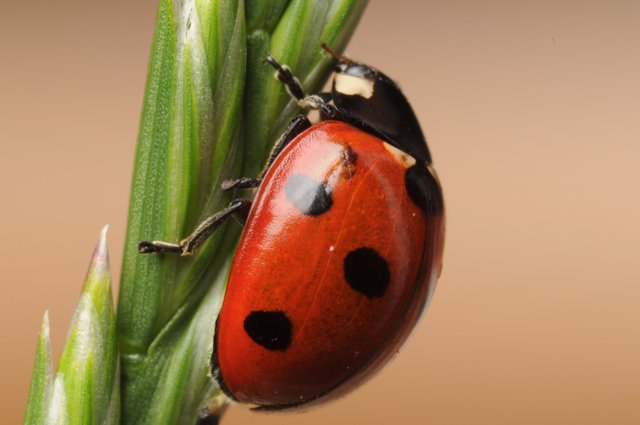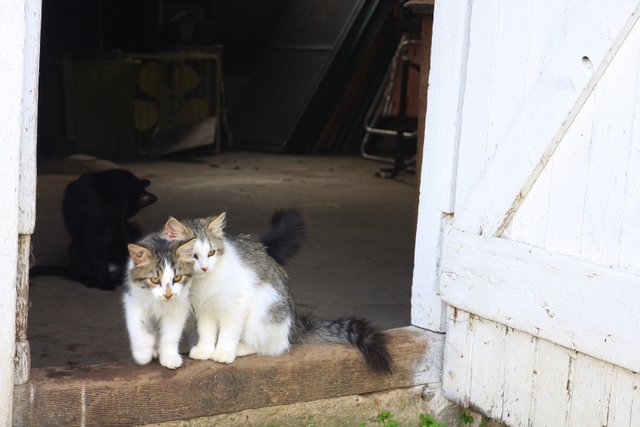
Introduction
In an interesting piece of serendipity yesterday @kevinwong posted about the use of pesticides on airline flights.
One of the concerns about these kinds of practices is the potential effect of these kinds of chemicals on human health.
Whilst perusing some of the press releases from universities yesterday I came across some preliminary research that is relevant to this issue and so decided to take a look at the paper.

The study was only recently published (December 27th 2016) in the journal "Chemical Research in Toxicology".
It is interesting not just for the findings but also because it employed computer modelling to search for new chemical interactions with human hormones.
In this case it was studying interactions with melatonin.
The Study
Summary of Design, Methods and Results
I won't comment so much on the methods in this case because I am not a research chemist so can't really speak to the techniques used here.
If you do have that kind of experience I would be pleased to hear your opinion and get your input.

The first part of the study utilised several pieces of computer software (the main one was called Chem2Risk) to model and hence identify environmental chemicals that could interact with the human melatonin receptors hMT1 and hMT2.
They excluded any chemicals that were already known to have an interaction with melatonin receptors from the results they received.
This left them with 2 insecticide compounds - called Carbaryl and Carbofuran which showed such activity.
The second part of the study tested the ability of these compounds to bind the two receptor types on human cells in the lab.
They were found to have an affinity for both receptor types but it was particularly strong for the hMT2 receptor.
This is interesting because previous research with these compounds have focused on their potential pathology related to their direct insecticidal effects.
One of the researchers, Marina Popovska-Gorevski, summarised their results as follows:
“We found that both insecticides are structurally similar to melatonin and that both showed affinity for the melatonin, hMT2 receptors."
Carbaryl and Carbofuran

These are both commonly used pesticides and they have already been linked to disease in direct occupational exposure where they have been found to cause depression and mental health issues.
According to the press release:
"The current research focuses on two chemicals, carbaryl, the third most widely used insecticide in the U.S. but which is illegal in several countries, and carbofuran, the most toxic carbamate insecticide, which has been banned for applications on food crops for human consumption since 2009. It is still used in many countries, including Mexico and traces persist in food, plants and wildlife."

They both belong to a group of compounds called acetylcholinesterase inhibitors.
This means they interfere with normal nerve transmission by preventing the breakdown of the neurotransmitter acetylcholine. That is how they kill insects.
The previous research into their toxicity had looked at this mechanism.
Interference with melatonin represents a completely new area of research for their potential effects on health.
Discussion - Why is this a problem?

Melatonin plays an important role in regulating our body clocks and that has further effects on a multitude of other hormones and bodily processes.
Anything that interferes with it could have serious implications for human health.
Diabetes and Other Metabolic Problems

One of the authors discussed the metabolic risks in the press release:
“By directly interacting with melatonin receptors in the brain and peripheral tissues, environmental chemicals, such as carbaryl, may disrupt key physiological processes leading to misaligned circadian rhythms, sleep patterns, and altered metabolic functions increasing the risk for chronic diseases such as diabetes and metabolic disorders,” said Dubocovich.
"For example, she explained, there is a fine balance between the release of insulin and glucose in the pancreas at very specific times of day, but if that balance becomes disrupted over a long period of time, there is a higher risk of developing diabetes."
There are other implications beyond just metabolic diseases like diabetes and obesity.
Cardiovascular Disease

There is growing evidence that melatonin has important roles to play in cardiovascular disease - heart attacks, angina, heart failure etc.
There is a nice review of the evidence here.
It is known to be a potent anti-oxidant with effects on blood pressure, inflammation and atherosclerosis (the furring up and hardening of arteries implicated in heart disease).
Cancers

Decreased levels of melatonin have been associated with higher levels of many types of cancer. The most famous one being breast cancer.
There is evidence that it may help to prevent cancer metastasis (spreading to other tissues) and this is an area of continuing research.
A number of mechanisms may be involved according to this study:
melatonin not only inhibits breast cancer cell growth, but also is capable of inhibiting angiogenesis, cancer cell invasion, and telomerase activity.
By competing with melatonin receptors Carbaryl and Carbofuran may interfere with these mechanisms and elevate cancer risk.
Conclusion

This is a fascinating study for a number of reasons.
Firstly the use of computer modelling to find new interactions for known compounds is a fascinating application of technology.
Although I was familiar with using such techniques I had not come across it being used in this exact way.
Secondly the potential interference of these compounds with melatonin (and hence via previously undiscovered mechanism) is of concern.
This is particularly relevant as we have in recent years started to determine the importance of melatonin in a number of diseases which are particularly problematic in modern society.
Is it possible that these two compounds are at least partly responsible for this?
It is hard to say.
As the authors point out in the study - this is the first stage of research. The next stage will be to see how these findings translate to animal models.
Do they directly increase the risk of cancers, cardiovascular disease, diabetes etc.?
As is frequently the case, more research is required to find out.
References
Popovska-Gorevski, Marina, Margarita L. Dubocovich, and Rajendram V. Rajnarayanan. 2017. “Carbamate Insecticides Target Human Melatonin Receptors.” Chemical Research in Toxicology, January. doi:10.1021/acs.chemrestox.6b00301.
“Common Insecticides Mimic Melatonin, Creating Higher Potential Risk for Diabetes and Metabolic Diseases.” 2017. Accessed January 22. http://www.buffalo.edu/news/releases/2017/01/021.html.
Wikipedia contributors. 2017. “Acetylcholinesterase Inhibitor.” Wikipedia, The Free Encyclopedia. January 1. https://en.wikipedia.org/w/index.php?title=Acetylcholinesterase_inhibitor&oldid=757772019.
Sun, Hang, Aaron M. Gusdon, and Shen Qu. 2016. “Effects of Melatonin on Cardiovascular Diseases: Progress in the Past Year.” Current Opinion in Lipidology 27 (4): 408–13.
Nooshinfar, Elaheh, Ava Safaroghli-Azar, Davood Bashash, and Mohammad Esmaeil Akbari. 2017. “Melatonin, an Inhibitory Agent in Breast Cancer.” Breast Cancer 24 (1): 42–51.
Ma, Zhiqiang, Yang Yang, Chongxi Fan, Jing Han, Dongjin Wang, Shouyin Di, Wei Hu, et al. 2016. “Melatonin as a Potential Anticarcinogen for Non-Small-Cell Lung Cancer.” Oncotarget 7 (29): 46768–84.
Su, Shih-Chi, Ming-Ju Hsieh, Wei-En Yang, Wen-Hung Chung, Russel J. Reiter, and Shun-Fa Yang. 2017. “Cancer Metastasis: Mechanisms of Inhibition by Melatonin.” Journal of Pineal Research 62 (1). doi:10.1111/jpi.12370.
Thank you for reading

Before you go have you filled in the Coinbase form to list STEEM? It only takes a few seconds. THIS POST shows you how.
If you like my work please follow me and check out my blog - @thecryptofiend
Images are taken from my personal Thinkstock Photography account. More information can be provided on request.

Hello @thecryptofiend,
Congratulations! Your post has been chosen by the communities of SteemTrail as one of our top picks today.
Also, as a selection for being a top pick today, you have been awarded a TRAIL token for your participation on our innovative platform...STEEM.
Please visit SteemTrail to get instructions on how to claim your TRAIL token today.
If you wish to learn more about receiving additional TRAIL tokens and SteemTrail, stop by and chat with us.
If you choose not to receive any comments or TRAIL rewards from SteemTrail, you can reply with "Stop" to opt out. Thank you.
Happy TRAIL!

Downvoting a post can decrease pending rewards and make it less visible. Common reasons:
Submit
Thank you so much!
Downvoting a post can decrease pending rewards and make it less visible. Common reasons:
Submit
Thanks for another great quality post and information I was not aware of. You education in the matter has been appreciated and may very well be shared among friends and acquaintances. Thanks again and namaste :)
Downvoting a post can decrease pending rewards and make it less visible. Common reasons:
Submit
You're welcome thanks:)
Downvoting a post can decrease pending rewards and make it less visible. Common reasons:
Submit
My oldest daughter used to take Melatonin to help her sleep, it didn't work that good as she seemed to get used to it, I have heard that blind people take it to help them sleep.
Downvoting a post can decrease pending rewards and make it less visible. Common reasons:
Submit
It depends on if you have a deficiency or not. I have found it useful for jet lag but it is hard to know if it is a placebo effect or not.
Downvoting a post can decrease pending rewards and make it less visible. Common reasons:
Submit
I thought Melatonin was natural?
Downvoting a post can decrease pending rewards and make it less visible. Common reasons:
Submit
It is but if you aren't deficient in it taking extra may not help you sleep.
Downvoting a post can decrease pending rewards and make it less visible. Common reasons:
Submit
Nothing made Jessica sleep whereas it would knock me out
Downvoting a post can decrease pending rewards and make it less visible. Common reasons:
Submit
It used to make me feel quite sleepy too!
Downvoting a post can decrease pending rewards and make it less visible. Common reasons:
Submit
Very true, oh and loved the kittys at the end :)
Downvoting a post can decrease pending rewards and make it less visible. Common reasons:
Submit
We had yo use valigan at times, its the only thing that calmed her enough to sleep
Downvoting a post can decrease pending rewards and make it less visible. Common reasons:
Submit
Yes those old antihistamines are great for sleep and pretty safe too compared to the alternatives.
Downvoting a post can decrease pending rewards and make it less visible. Common reasons:
Submit
Thanks @karenb54 and @thecryptofiend for this interesting dscussion here.
I was wondering if there is impact on sleep too when I look at this. :)
Downvoting a post can decrease pending rewards and make it less visible. Common reasons:
Submit
Hi @ace108. I think it depends it didn't have much effect on my daughter who had ADHD but knocked me out :)
Downvoting a post can decrease pending rewards and make it less visible. Common reasons:
Submit
Thanks for sharing! Having a child....this is of great concern to me.
Downvoting a post can decrease pending rewards and make it less visible. Common reasons:
Submit
You're welcome:)
Downvoting a post can decrease pending rewards and make it less visible. Common reasons:
Submit
I have so many questions about this.
How much does carbaryl and carbofuran interfere with melatonin?
Do these pesticides diffuse through the skin?
And would washing fruits and vegetables with carbaryl and carbofuran remove wash it away?
Downvoting a post can decrease pending rewards and make it less visible. Common reasons:
Submit
They don't, they bind to the melatonin receptor. Which melatonin also binds to. This receptor is involved in a number of downstream pathways some of which regulate our sleep-wake cycle.
Yes both Carbaryl and Carbofuran can diffuse through the skin.
Would washing fruits and vegetables remove them yes, though if recently applied they may be present in the fruit/vegetable (more an issue for home gardeners, store bought would be long past the metabolic breakdown time and they would be long gone).
Downvoting a post can decrease pending rewards and make it less visible. Common reasons:
Submit
Ok, thanks for the clarification! So when the author talks about melatonin interference, what he really means is carbaryl and carbofuran interfering with its receptors.
That being said, if melatonin couldn't bind with its receptor, wouldn't that increase melatonin's concentration in the body? For example, the author writes "there is growing evidence that melatonin has important roles to play in cardiovascular disease - heart attacks, angina, heart failure etc" and "decreased levels of melatonin have been associated with higher levels of many types of cancer". Wouldn't that help combat these things? Or is this related more to sleep?
Downvoting a post can decrease pending rewards and make it less visible. Common reasons:
Submit
The role it plays in those chronic illnesses are seemingly due to melatonin's role in maintaining the sleep-wake cycle. Disruption of that bodily circadaen rhythem is thought to increase the likelihood of cancer, diabetes, heart disease etc.
It's not about the intracellular concentration of melatonin, it's variable and is cycled every day. It's more about activation of the melatonin receptors at the wrong time and disruption of the circadaen rhythem. At least that was how I understood the paper.
Downvoting a post can decrease pending rewards and make it less visible. Common reasons:
Submit
Good question I think in the paper they used a few measurements the simplest one being that in the docking simulations they bound about 20-30% less than melatonin itself which is quite a strong effect. How this applies in a living subject is hard to say though and would need further research.
It certainly helps to reduce exposure - some small amounts might still remain. There is a paper which discusses it here:
https://www.ncbi.nlm.nih.gov/pmc/articles/PMC3907644/
Here is an excerpt:
Downvoting a post can decrease pending rewards and make it less visible. Common reasons:
Submit
I'm still digesting "the use of pesticides on airline flights" never would have even thought that was something I'm being exposed to in that scenario, wow.
Downvoting a post can decrease pending rewards and make it less visible. Common reasons:
Submit
Yes it is scary. Pesticides are only a tiny fraction of the chemicals we are exposed too though. For most of them we really don't know what the effects are.
Downvoting a post can decrease pending rewards and make it less visible. Common reasons:
Submit
TIL more reason to go Organic. Quality Post.
Downvoting a post can decrease pending rewards and make it less visible. Common reasons:
Submit
Thanks. Yes for sure!
Downvoting a post can decrease pending rewards and make it less visible. Common reasons:
Submit
I beat you to this one by a few hours :)
https://steemit.com/science/@justtryme90/common-insecticides-mimic-melatonin-and-disrupt-human-circadian-rythems
Only one of the two pesticides are commonly used (carbaryl), the other (carbofuran) is actually restricted as it is highly toxic, for non melatonin receptor binding reasons.
Downvoting a post can decrease pending rewards and make it less visible. Common reasons:
Submit
I was just going to say...I read about this just a minute ago!
Downvoting a post can decrease pending rewards and make it less visible. Common reasons:
Submit
Lol - it's in stereo now!
Downvoting a post can decrease pending rewards and make it less visible. Common reasons:
Submit
There you go!
Downvoting a post can decrease pending rewards and make it less visible. Common reasons:
Submit
I was about to advertise you ;) You were faster :D
Downvoting a post can decrease pending rewards and make it less visible. Common reasons:
Submit
Great minds think alike, @thecryptofiend and I were furiously typing and racing to allow people to read about this!
Downvoting a post can decrease pending rewards and make it less visible. Common reasons:
Submit
Lol I thought I would be the only one who saw it. I think this is like the convergent evolution of thought!
Downvoting a post can decrease pending rewards and make it less visible. Common reasons:
Submit
He was for sure I don't know how it got it out so fast!
Downvoting a post can decrease pending rewards and make it less visible. Common reasons:
Submit
At the end, we have two nice articles :)
Downvoting a post can decrease pending rewards and make it less visible. Common reasons:
Submit
Yes for sure. It is bound to happen particularly at this time of year which is pretty quiet in my experience for research.
Downvoting a post can decrease pending rewards and make it less visible. Common reasons:
Submit
I actually discussed both posts with my wife (@lamouthe) this morning. Very interestingly, we were saying that all this pesticide stuff should be even more worrying. Even if in principle, everything is under control and we only end up with harmless tracks of pesticide in the everyday-life products (this is proven in many cases), the problem is that quantity is non zero. Once integrated over all the products we eat, who know whether this is really so harmless?
And there is very little way to know (pesticides do not respect borders, etc...).
Downvoting a post can decrease pending rewards and make it less visible. Common reasons:
Submit
Exactly and there are so many other compounds that may have other effects that add to things like cancer risk via other mechanisms.
Downvoting a post can decrease pending rewards and make it less visible. Common reasons:
Submit
Cool. Yes I think Carbofuran is banned for human food production in most places but is apparently still used in some places like Mexico. I think the main problem is that with modern grocery shopping our food comes from so many sources we could still inadvertently be exposed.
Downvoting a post can decrease pending rewards and make it less visible. Common reasons:
Submit
Yep Carbofuran is (at least as I was reading) really nasty stuff. There really don't seem to be any good pesticides, so I am not sure what large growers are supposed to do to keep food production high enough.
Downvoting a post can decrease pending rewards and make it less visible. Common reasons:
Submit
Yes I think some people were seriously disabled and killed due to exposure. Seem to remember reading about it when researching cholinesterase poising some time back.
Well GM crops would be the alternative but they don't have good press. Natural pest control (using predators like ladybirds can help too) but I'm not sure how effective they are on an industrial scale. Nothing in nature comes for free I suppose!
Downvoting a post can decrease pending rewards and make it less visible. Common reasons:
Submit